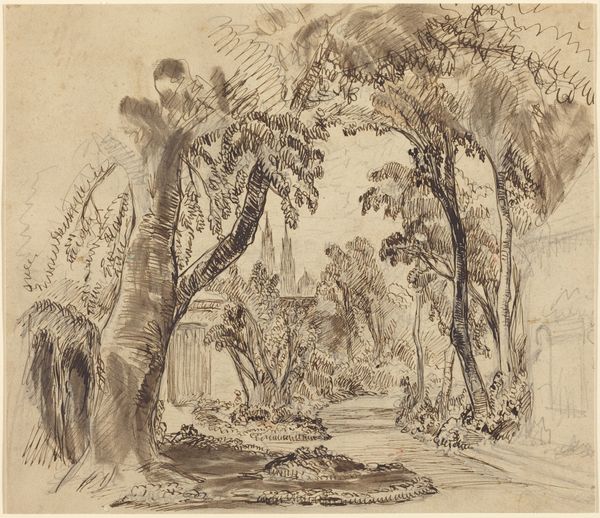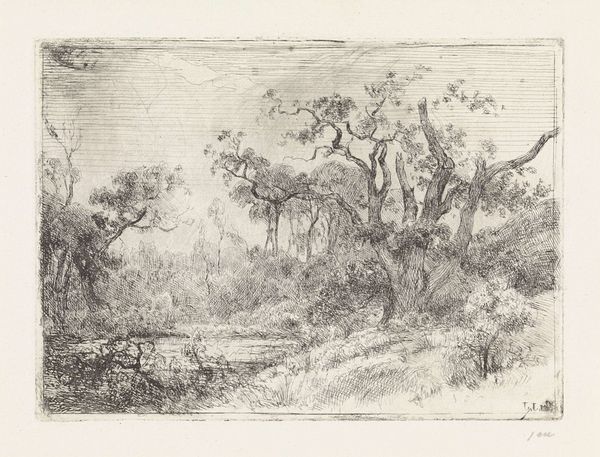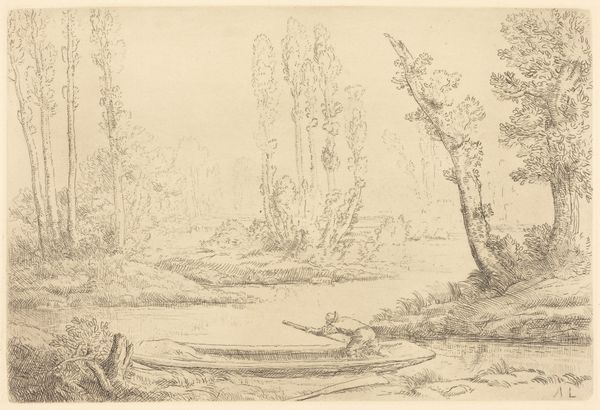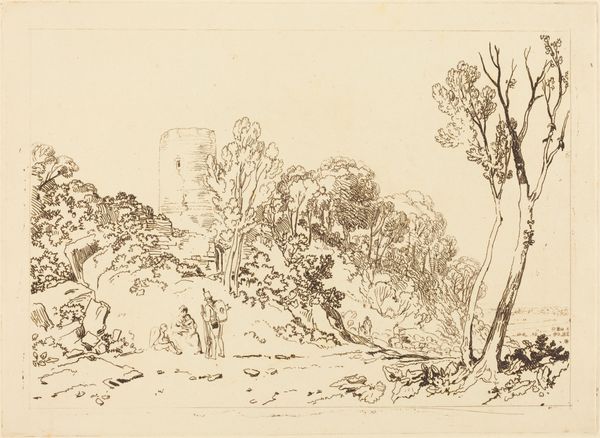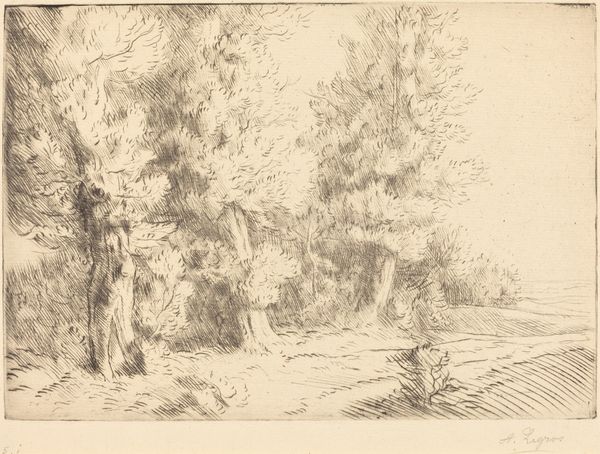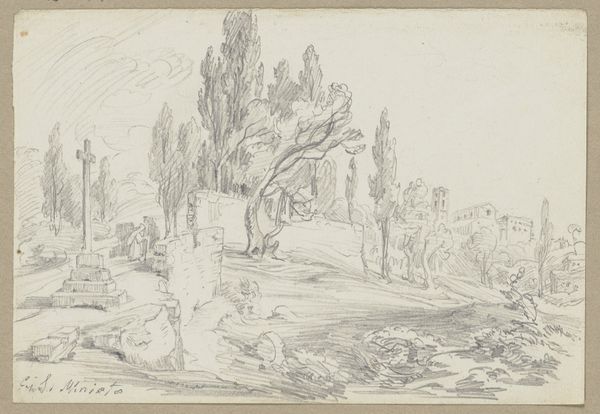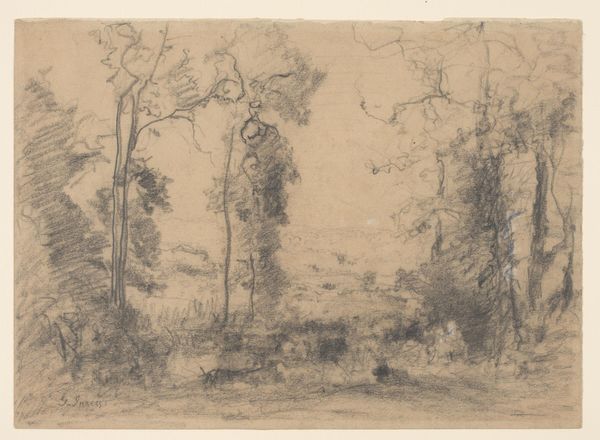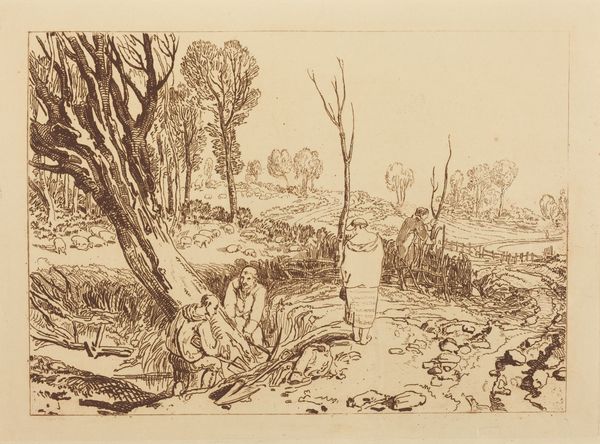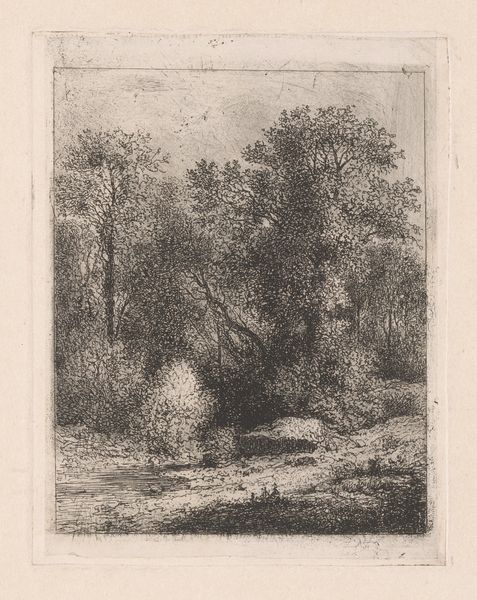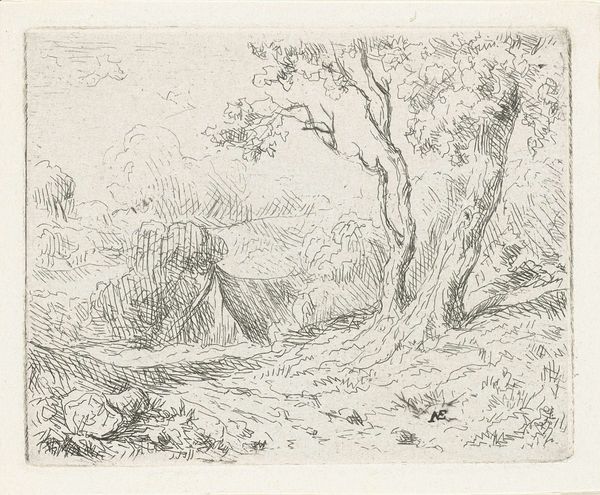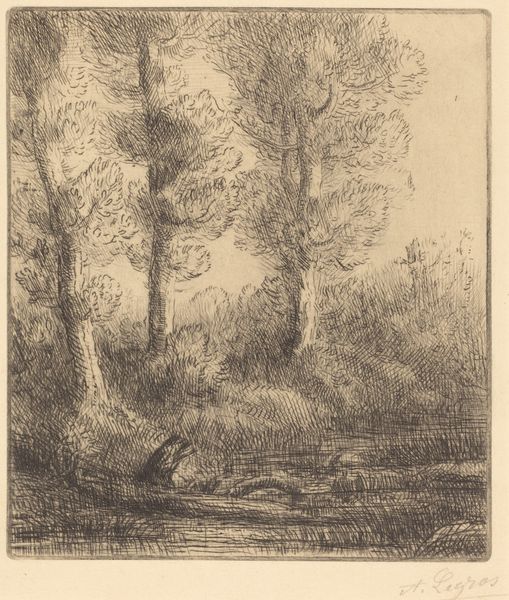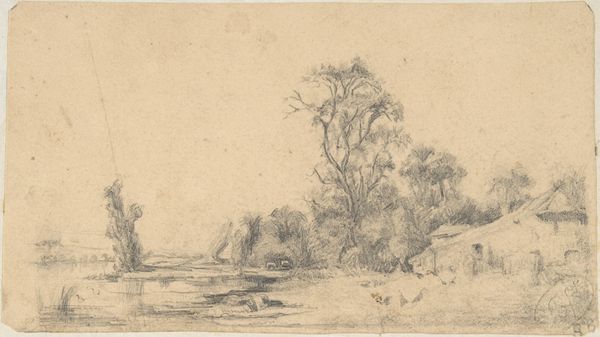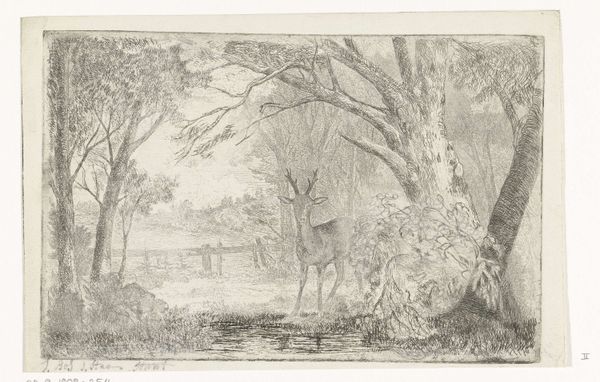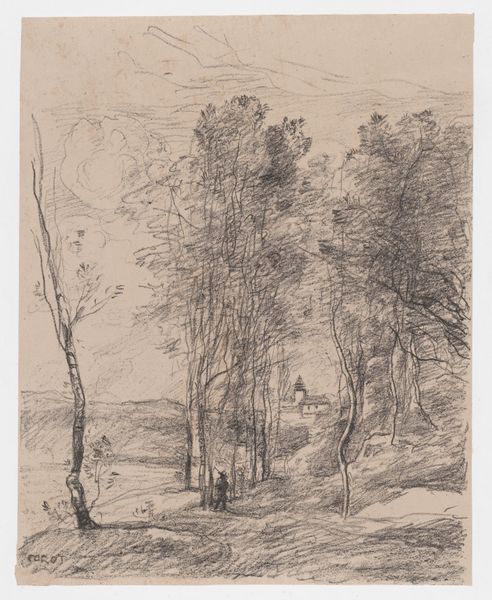
drawing, print, etching
#
drawing
# print
#
etching
#
landscape
#
figuration
#
genre-painting
#
realism
Copyright: National Gallery of Art: CC0 1.0
Curator: This is Alphonse Legros’s print "Squaring Logs," also known as "Homme que fend des bûches." We don't have a specific date for it. The medium is etching, giving it a finely detailed, almost gritty quality. What strikes you first about it? Editor: The overwhelming sense of labor. The composition places a lone figure deep in the woods, dwarfed by these massive logs, clearly engaged in the hard work of splitting wood. It speaks to a direct engagement with material and toil. Curator: Absolutely. Legros was deeply interested in portraying rural life and labor. Etchings like this played a significant role in the Realist movement, making depictions of everyday life accessible to a wider audience through print culture. It moves away from the grand narratives found in painting academies. Editor: And the material itself informs that accessibility. Etching allowed for relatively inexpensive reproductions, placing images of working-class individuals in the homes of middle-class consumers. Consider how the very process of creation and distribution reflects the artwork's subject matter. Curator: Right. This particular print shows a strong influence from Millet and Courbet, artists who challenged the artistic status quo. How the socio-political climate allowed, and in some cases encouraged, such radical representation to filter into the mainstream. Editor: I find myself wondering about the individual experience represented. There’s almost a sense of isolation and quiet dignity despite the implied strenuous activity. And given the context of industrialization at that time, this work seems to represent the value in this person's labor, perhaps lamenting that this work could disappear as the forest slowly thins out, while machines continue to expand the economy. Curator: And how the print medium itself contributes to that. Etching, a meticulous and time-consuming craft, mirrors the dedication of the woodcutter. The material echoes the message. Editor: I see this piece and think of how the print helped shape a visual record. It makes me think of our role now. The images we are helping disseminate to new audiences who may discover a different meaning, based on our specific time and perspective. Curator: It's fascinating how a seemingly simple image of a woodcutter can open up discussions about class, labor, and the very nature of artistic representation. The act of looking itself is active, not passive. Editor: A humble yet deeply compelling piece. Thanks for bringing it to my attention.
Comments
No comments
Be the first to comment and join the conversation on the ultimate creative platform.
